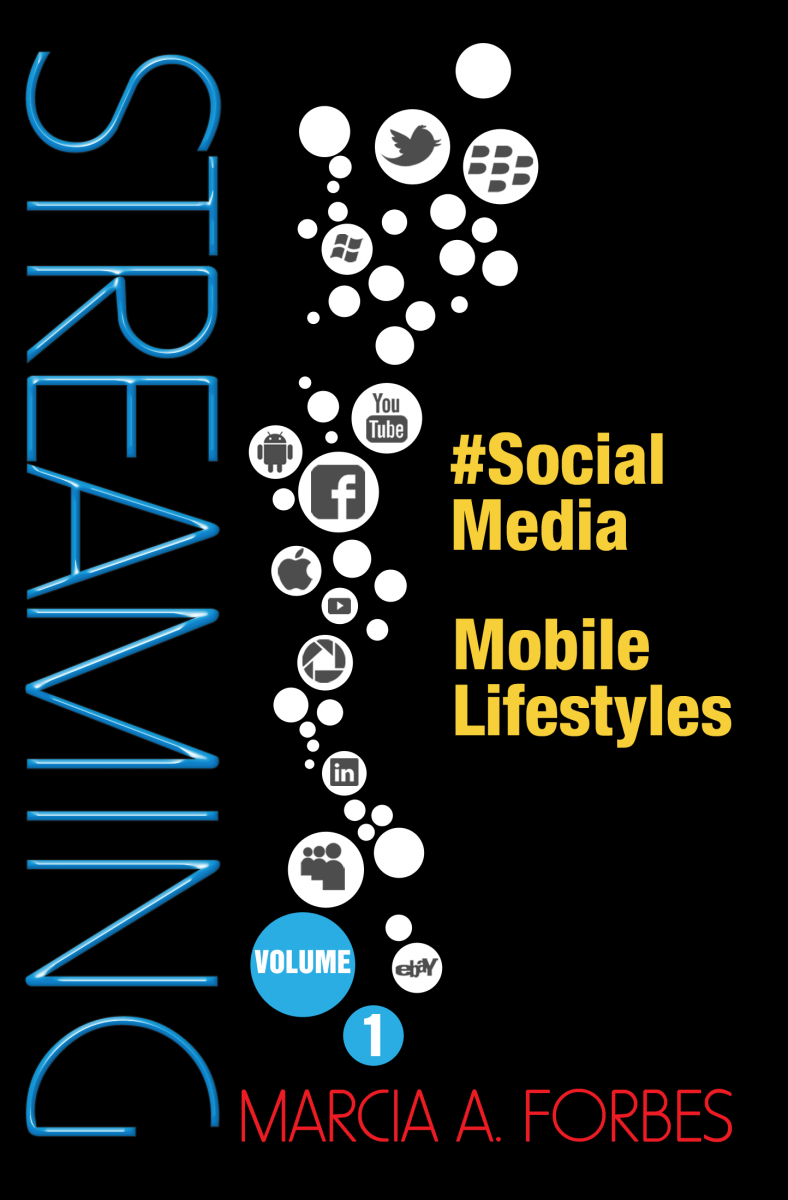Behind the Figures of ICT Indicators & Broadband Survey 2011
Behind the Figures of ICT Indicators & Broadband Survey 2011
Greetings on this World Telecommunications Day! I congratulate the Mona School of Business and specifically the Telecommunications Policy and Management Unit for this body of work in bringing us Jamaica’s ICT indicators and Broadband Survey. Professor Dunn has done an excellent job in presenting us with the findings. My job as discussant is to pull out some of the knotty issues as they relate to these findings. To explore the ‘So what?’ behind these statistics. To add granularity and tease out some of the implications for Jamaica as we plan our ICT future. In doing this I will even play the role of devil’s advocate and be a wee bit controversial. This is not to undermine or in any way discredit the value of the work of the Mona School of Business and the Statistical Institute of Jamaica. Rather, the issues I will raise are designed to help us to think more critically as we move forward, in particular with respect to certain policy directions and decisions.
Methodology – The Sample
Quite likely I have been asked to serve as discussant because of my work- in-progress research work in ICT through a project, ‘Youth Online’, which explores how 17 to 30 year olds are using cell phones, computers and the internet. I will pull on some of the findings and experience from this project as I examine the statistics presented to us by the Mona School of Business.
Let me start with an absolutely essential first step in any analysis of research findings and that is, to examine the methodology used in this data collection and specifically as it relates to the sample. We are told that this study aimed for a sample of 2,200 persons and achieved a response rate of 80%. This indicates that 20% of those who the researchers intended to include did not actually participate.
We must therefore ask, ‘Who were the ones left out and in what ways, if at all, could their omission compromise the findings?’
Was it the rural folks who were hard to find? Or could it have been the pre- teens or the teenagers whose participation in research projects requires parental permission? From my own research work I know how difficult it is to tap into rich Jamaicans, while they comprise a small percentage of the overall population, omitting them could skew the findings. Were they the ones left out? Or was it a combination of all the above?
Since the Statistical Institute of Jamaica and the University are involved, I will assume that proper accommodation was made for the absent 20%, with appropriate weightings as required. We do, however, need to be assured of this. It would also be useful to learn more about the profile and number of individual participants. How is the ‘individual’ defined as opposed to the ‘household’? These kinds of information lend for more sensitive data analysis. The team involved in the drilling down exercise needs to be aware of these nuances to facilitate their data interpretation and analysis.
Having raised methodological issues for further clarification, I want to focus on one key area for which these statistics have specific implications. I move to examine the research findings specifically within the context of education. This does not mean that I am ignoring the obvious policy implications as they relate to cost reduction for internet access. I speak specifically of costs related to internet access at home. After all, as the data show, home is where most people access the internet so that’s where we will need to focus cost reduction strategies.
Education
While three quarters of respondents used the internet for emails and social networking, as Professor Dunn noted, about two thirds of them used it for ‘formal education/learning’. Although it is not clear how ‘learning’ is defined, we take it that more persons are using the internet to communicate with others than those using it for educational purposes. But, ‘Who are the ones using the internet for educational purposes?’ Was it the 10 to 18 year olds – the schoolers? Or, was it mainly those at tertiary institutions? Specific breakout based on age and gender is essential for policy planning, especially in relation to the coming roll-out of broadband access in schools and against a backdrop of billions of dollars spent on the e-Learning project.
Based on my own work I realize that any response regarding the internet for schoolwork has to be probed and critically examined. Among a survey sample of 108 inner city students from four non-traditional high schools, those in the 17 to 19 year range (the ones preparing for various exams), who used the internet for schoolwork came out just ahead of those who used it to communicate, 63% versus 62%. So we could say they were equal. Drilling down, however, revealed marked gender differences, 76% of females compared to 50.5% of males used the internet for school-related activities.
Given the high level of male disengagement from education, the disparity is not surprising. What is surprising, though, is what came out of the focus group sessions. These sessions helped me to understand that although so many girls talked about using the internet for schoolwork, they were spending as one girl said, “five minutes for schoolwork and 55 minutes for facebook”. So we can’t just rely on the top line statistics to say ‘Yes, Jamaicans are using the internet productively’ because two thirds of them said they use it for formal education/ learning. I make this point within the context of recent announcements for the planned rollout of broadband access in schools over the next five years. We need to get maximum bang for buck from this expenditure.
Again I pull on my own research findings to support this point. Among the 108 inner city survey respondents only one, a female, commented on internet use for college-related search. She wrote, “Well only thing the internet means to me is to used it search for college application forms and other forms and download them” (the grammatical errors are as she wrote them). Taking into account that 17 to 19 year olds are on the threshold of tertiary training or the job market, it is instructive that these poor students did not seem to see the internet as an avenue for exploring opportunities in either of these two areas.
The failure of poor students to grasp the potential of the internet to explore job opportunities and tertiary level training suggests the need to rethink how this facility is being used in schools and to review further Government intervention via the e-Learning or similar projects to install ICTs in schools. While we may not be slaves to our society, cultural nuances need to be given greater consideration in the decision-making process.
We need to educate youths to understand the value of ICTs and not simply believe that their installation in schools and other institutions will redound to their productive use, with individual and societal advancement. We need to foster a mind-set which appreciates the value of ICTs. Many guidance counsellors bemoan the ways in which our youths are cyberslacking, even those with little access. When asked to list the top three things they did online, among the 303 from my study, Facebook led. When combined with other online communities like Hi5 and Tagged, together they accounted for 42% of the top three online activities. Information gathering and school research came in second at 32%, with music-related activities 3rd at 26%.
Although three quarters of these poor students in my study averaged one hour or less online each day, much of this time was devoted to social networking. This is despite what they described as very insufficient amount of internet access time and the burden of exam preparation which required use of the interent. While one implication of this is the need for greater internet access at home, another implication is the need to teach students the productive use of a scarce resource.
No Need/Interest
Coming back to the Mona School of Business’s findings, we cannot hide from the 24%, that’s almost a quarter of the respondents, who said they had no need or no interest in the internet. Who are these persons? Again demographic profile would help us to more clearly define where work needs to be done. They are unlikely to be the under 30s who in my own research work are clamouring for internet access as a basic human right. Policy implications of this finding are different depending on age, gender and other details of profile. If more mature Jamaicans, for example those over 50 say they have no interest or need for the internet, it means a different thing than if our 30 years and under say this. The latter category is supposed to be the millennials, those born between around 1980 to 2000, the ones described elsewhere as digital citizens.
Cost & Culture
Many times nowadays I use the social networks of Twitter and Facebook as sounding boards. So when Professor Dunn invited me to serve as discussant and mentioned his interest in exploring how to increase internet access, I threw it out to twittersphere in general as well as specifically to a few individuals who I knew would prime the pump so to speak, get the conversation going. I asked tweeps and Facebook friends what could be done to drive internet access. In short order I got 50 tweets from 25 persons and 10 comments from 7 Facebook friends.
The social networkers spoke primarily about the need to reduce costs but almost as often they highlighted the need to educate the public about the value of ICTs. Here are six responses:
1) @top5Jamaica Cheaper internet is 1 step that's happening… but govt. needs policies that built on the business & educational power of internet.
2) @anonemouz cheaper net is a factor being addressed, but media literacy training 4 parents key. Most dont see NEED 4 another utility bill
3) @Gordonswaby Accessability and affordability. But I also think there should be free workshops exposing people to the usefulness of the Internet. Because if you don't value it. Then you won't pay for it…Believe it or not some people believe that Google and Facebook are the internet
4) @AstleyHenry What about touting the entrepreneurial potential of the internet? The net is a productive asset, not just a consumer good
5) @utenjm Jamaicans find cost the big issue, cost of hardware and service ... if the gct cannot be dropped on computers, special finance/lease options need to be made available for ppl to afford one
6) @mamcnaughton I think a big part of it is culture and priorities. I was in bleachers for jamaican... and there were so many people with blackberry and other smart phones. I was bit shocked… I'm not trying to stereotype but most Jamaicans don't spend like we live in a dev country
7) @cucumberjuice “Educating households -- how to use a computer, building comfort & familiarity -- are important.”
( … indicates another tweet)
Education is essential since among those not using the internet, 62% said they did not know how to use it. In moving forward as we act on the findings from ICT Indicators and Broadband Study, I also propose that we harness the technologies and use them as a part of our arsenal toward success.
Moving Forward
Facebook
Since so many Jamaican students are on Facebook shouldn’t we be exploring how to capitalize on this social network? I believe Minister Holness may have used Facebook Class, the case study of how Professor Fogg challenged his Stanford University students to create Facebook applications (apps) and the success they achieved, to drive his recently launched competition to create Blackberry and Playbook apps. Start with where their interest lies and build on that.
Teachers
With 36.6% of the respondents saying that they access the internet at ‘place of education’, outpaced only by home use at 43%, the role of schools and tertiary institutions in educating students about internet use seems clear. Instead of pen and paper essays in school, why not blogs? A great deal hinges on teachers and their willingness to move from the didactic mode to becoming facilitators of learning. Power relationships are entrenched in the teacher/student relationship and changes in cultural practises are frequently strongly resisted.
Mobile Phones
The tremendous productive potential of mobile phones remains largely untapped. Three quarters of mobile phone users though aware of mobile internet, had never used it. Although it is reported that smart phones account for a mere 10% of the mobile phone market, that percentage of the 110% mobile penetration level could mean there are between 200,000 to 300,000 smart phones in the island (those with multiple phones would reduce this number). And even those phones that are not so smart can still do a great deal more than chat and text. How we use technologies is rooted in our culture. We now need to plant some new practises and encourage their growth.
Conclusion
A shift in our mind-set regarding actual use of ICTs is essential, as too a process of educating Jamaicans about the value of the internet and its use for productive purposes, including job creation. Providing access is only a part of the solution, albeit an important part. What we do with this access is also very important. While we use these very revealing statistics to clamber for reduced access fees and equipment cost, let’s also give attention to fostering and creating a climate for productive internet use.


